-
EXECUTIVE SUMMARY
-
Market Overview
-
Key Findings
-
Market Segmentation
-
Competitive Landscape
-
Challenges and Opportunities
-
Future Outlook
-
\r\n
-
MARKET INTRODUCTION
-
Definition
-
Scope of the study
- Research Objective
- Assumption
- Limitations
-
RESEARCH METHODOLOGY
-
Overview
-
Data Mining
-
Secondary Research
-
Primary Research
- Primary Interviews and Information Gathering Process
- Breakdown of Primary Respondents
-
Forecasting Model
-
Market Size Estimation
- Bottom-Up Approach
- Top-Down Approach
-
Data Triangulation
-
Validation
-
\r\n
-
MARKET DYNAMICS
-
Overview
-
Drivers
-
Restraints
-
Opportunities
-
MARKET FACTOR ANALYSIS
-
Value chain Analysis
-
Porter's Five Forces Analysis
- Bargaining Power of Suppliers
- Bargaining Power of Buyers
- Threat of New Entrants
- Threat of Substitutes
- Intensity of Rivalry
-
COVID-19 Impact Analysis
- Market Impact Analysis
- Regional Impact
- Opportunity and Threat Analysis
-
\r\n
-
AVIATION FUEL MARKET, BY FUEL TYPE (USD BILLION)
-
Jet A
-
Jet A-1
-
Jet B
-
Avgas
-
Sustainable Aviation Fuel
-
AVIATION FUEL MARKET, BY END USE (USD BILLION)
-
Commercial Aviation
-
Military Aviation
-
General Aviation
-
AVIATION FUEL MARKET, BY DISTRIBUTION CHANNEL (USD BILLION)
-
Direct Sales
-
Distributors
-
Retailers
-
AVIATION FUEL MARKET, BY APPLICATION (USD BILLION)
-
Cargo Transportation
-
Passenger Flights
-
Charter Services
-
AVIATION FUEL MARKET, BY REGIONAL (USD BILLION)
-
North America
- US
- Canada
-
Europe
- Germany
- UK
- France
- Russia
- Italy
- Spain
- Rest of Europe
-
APAC
- China
- India
- Japan
- South Korea
- Malaysia
- Thailand
- Indonesia
- Rest of APAC
-
South America
- Brazil
- Mexico
- Argentina
- Rest of South America
-
MEA
- GCC Countries
- South Africa
- Rest of MEA
-
\r\n
-
COMPETITIVE LANDSCAPE
-
Overview
-
Competitive Analysis
-
Market share Analysis
-
Major Growth Strategy in the Aviation Fuel Market
-
Competitive Benchmarking
-
Leading Players in Terms of Number of Developments in the Aviation Fuel Market
-
Key developments and growth strategies
- New Product Launch/Service Deployment
- Merger & Acquisitions
- Joint Ventures
-
Major Players Financial Matrix
- Sales and Operating Income
- Major Players R&D Expenditure. 2023
-
COMPANY PROFILES
-
World Fuel Services
- Financial Overview
- Products Offered
- Key Developments
- SWOT Analysis
- Key Strategies
-
ExxonMobil
- Financial Overview
- Products Offered
- Key Developments
- SWOT Analysis
- Key Strategies
-
Marathon Petroleum
- Financial Overview
- Products Offered
- Key Developments
- SWOT Analysis
- Key Strategies
-
PetroChina
- Financial Overview
- Products Offered
- Key Developments
- SWOT Analysis
- Key Strategies
-
Shell
- Financial Overview
- Products Offered
- Key Developments
- SWOT Analysis
- Key Strategies
-
AirBP
- Financial Overview
- Products Offered
- Key Developments
- SWOT Analysis
- Key Strategies
-
Chevron
- Financial Overview
- Products Offered
- Key Developments
- SWOT Analysis
- Key Strategies
-
Phillips 66
- Financial Overview
- Products Offered
- Key Developments
- SWOT Analysis
- Key Strategies
-
Valero Energy
- Financial Overview
- Products Offered
- Key Developments
- SWOT Analysis
- Key Strategies
-
Castrol
- Financial Overview
- Products Offered
- Key Developments
- SWOT Analysis
- Key Strategies
-
Energizer Holdings
- Financial Overview
- Products Offered
- Key Developments
- SWOT Analysis
- Key Strategies
-
Reliance Industries
- Financial Overview
- Products Offered
- Key Developments
- SWOT Analysis
- Key Strategies
-
TotalEnergies
- Financial Overview
- Products Offered
- Key Developments
- SWOT Analysis
- Key Strategies
-
British Petroleum
- Financial Overview
- Products Offered
- Key Developments
- SWOT Analysis
- Key Strategies
-
SABIC
- Financial Overview
- Products Offered
- Key Developments
- SWOT Analysis
- Key Strategies
-
APPENDIX
-
References
-
Related Reports
-
\r\n
-
LIST OF TABLES
-
\r\n
-
LIST OF ASSUMPTIONS
-
NORTH AMERICA AVIATION FUEL MARKET SIZE ESTIMATES & FORECAST, BY FUEL TYPE, 2019-2035 (USD BILLIONS)
-
NORTH AMERICA AVIATION FUEL MARKET SIZE ESTIMATES & FORECAST, BY END USE, 2019-2035 (USD BILLIONS)
-
NORTH AMERICA AVIATION FUEL MARKET SIZE ESTIMATES & FORECAST, BY DISTRIBUTION CHANNEL, 2019-2035 (USD BILLIONS)
-
NORTH AMERICA AVIATION FUEL MARKET SIZE ESTIMATES & FORECAST, BY APPLICATION, 2019-2035 (USD BILLIONS)
-
NORTH AMERICA AVIATION FUEL MARKET SIZE ESTIMATES & FORECAST, BY REGIONAL, 2019-2035 (USD BILLIONS)
-
US AVIATION FUEL MARKET SIZE ESTIMATES & FORECAST, BY FUEL TYPE, 2019-2035 (USD BILLIONS)
-
US AVIATION FUEL MARKET SIZE ESTIMATES & FORECAST, BY END USE, 2019-2035 (USD BILLIONS)
-
US AVIATION FUEL MARKET SIZE ESTIMATES & FORECAST, BY DISTRIBUTION CHANNEL, 2019-2035 (USD BILLIONS)
-
US AVIATION FUEL MARKET SIZE ESTIMATES & FORECAST, BY APPLICATION, 2019-2035 (USD BILLIONS)
-
US AVIATION FUEL MARKET SIZE ESTIMATES & FORECAST, BY REGIONAL, 2019-2035 (USD BILLIONS)
-
CANADA AVIATION FUEL MARKET SIZE ESTIMATES & FORECAST, BY FUEL TYPE, 2019-2035 (USD BILLIONS)
-
CANADA AVIATION FUEL MARKET SIZE ESTIMATES & FORECAST, BY END USE, 2019-2035 (USD BILLIONS)
-
CANADA AVIATION FUEL MARKET SIZE ESTIMATES & FORECAST, BY DISTRIBUTION CHANNEL, 2019-2035 (USD BILLIONS)
-
CANADA AVIATION FUEL MARKET SIZE ESTIMATES & FORECAST, BY APPLICATION, 2019-2035 (USD BILLIONS)
-
CANADA AVIATION FUEL MARKET SIZE ESTIMATES & FORECAST, BY REGIONAL, 2019-2035 (USD BILLIONS)
-
EUROPE AVIATION FUEL MARKET SIZE ESTIMATES & FORECAST, BY FUEL TYPE, 2019-2035 (USD BILLIONS)
-
EUROPE AVIATION FUEL MARKET SIZE ESTIMATES & FORECAST, BY END USE, 2019-2035 (USD BILLIONS)
-
EUROPE AVIATION FUEL MARKET SIZE ESTIMATES & FORECAST, BY DISTRIBUTION CHANNEL, 2019-2035 (USD BILLIONS)
-
EUROPE AVIATION FUEL MARKET SIZE ESTIMATES & FORECAST, BY APPLICATION, 2019-2035 (USD BILLIONS)
-
EUROPE AVIATION FUEL MARKET SIZE ESTIMATES & FORECAST, BY REGIONAL, 2019-2035 (USD BILLIONS)
-
GERMANY AVIATION FUEL MARKET SIZE ESTIMATES & FORECAST, BY FUEL TYPE, 2019-2035 (USD BILLIONS)
-
GERMANY AVIATION FUEL MARKET SIZE ESTIMATES & FORECAST, BY END USE, 2019-2035 (USD BILLIONS)
-
GERMANY AVIATION FUEL MARKET SIZE ESTIMATES & FORECAST, BY DISTRIBUTION CHANNEL, 2019-2035 (USD BILLIONS)
-
GERMANY AVIATION FUEL MARKET SIZE ESTIMATES & FORECAST, BY APPLICATION, 2019-2035 (USD BILLIONS)
-
GERMANY AVIATION FUEL MARKET SIZE ESTIMATES & FORECAST, BY REGIONAL, 2019-2035 (USD BILLIONS)
-
UK AVIATION FUEL MARKET SIZE ESTIMATES & FORECAST, BY FUEL TYPE, 2019-2035 (USD BILLIONS)
-
UK AVIATION FUEL MARKET SIZE ESTIMATES & FORECAST, BY END USE, 2019-2035 (USD BILLIONS)
-
UK AVIATION FUEL MARKET SIZE ESTIMATES & FORECAST, BY DISTRIBUTION CHANNEL, 2019-2035 (USD BILLIONS)
-
UK AVIATION FUEL MARKET SIZE ESTIMATES & FORECAST, BY APPLICATION, 2019-2035 (USD BILLIONS)
-
UK AVIATION FUEL MARKET SIZE ESTIMATES & FORECAST, BY REGIONAL, 2019-2035 (USD BILLIONS)
-
FRANCE AVIATION FUEL MARKET SIZE ESTIMATES & FORECAST, BY FUEL TYPE, 2019-2035 (USD BILLIONS)
-
FRANCE AVIATION FUEL MARKET SIZE ESTIMATES & FORECAST, BY END USE, 2019-2035 (USD BILLIONS)
-
FRANCE AVIATION FUEL MARKET SIZE ESTIMATES & FORECAST, BY DISTRIBUTION CHANNEL, 2019-2035 (USD BILLIONS)
-
FRANCE AVIATION FUEL MARKET SIZE ESTIMATES & FORECAST, BY APPLICATION, 2019-2035 (USD BILLIONS)
-
FRANCE AVIATION FUEL MARKET SIZE ESTIMATES & FORECAST, BY REGIONAL, 2019-2035 (USD BILLIONS)
-
RUSSIA AVIATION FUEL MARKET SIZE ESTIMATES & FORECAST, BY FUEL TYPE, 2019-2035 (USD BILLIONS)
-
RUSSIA AVIATION FUEL MARKET SIZE ESTIMATES & FORECAST, BY END USE, 2019-2035 (USD BILLIONS)
-
RUSSIA AVIATION FUEL MARKET SIZE ESTIMATES & FORECAST, BY DISTRIBUTION CHANNEL, 2019-2035 (USD BILLIONS)
-
RUSSIA AVIATION FUEL MARKET SIZE ESTIMATES & FORECAST, BY APPLICATION, 2019-2035 (USD BILLIONS)
-
RUSSIA AVIATION FUEL MARKET SIZE ESTIMATES & FORECAST, BY REGIONAL, 2019-2035 (USD BILLIONS)
-
ITALY AVIATION FUEL MARKET SIZE ESTIMATES & FORECAST, BY FUEL TYPE, 2019-2035 (USD BILLIONS)
-
ITALY AVIATION FUEL MARKET SIZE ESTIMATES & FORECAST, BY END USE, 2019-2035 (USD BILLIONS)
-
ITALY AVIATION FUEL MARKET SIZE ESTIMATES & FORECAST, BY DISTRIBUTION CHANNEL, 2019-2035 (USD BILLIONS)
-
ITALY AVIATION FUEL MARKET SIZE ESTIMATES & FORECAST, BY APPLICATION, 2019-2035 (USD BILLIONS)
-
ITALY AVIATION FUEL MARKET SIZE ESTIMATES & FORECAST, BY REGIONAL, 2019-2035 (USD BILLIONS)
-
SPAIN AVIATION FUEL MARKET SIZE ESTIMATES & FORECAST, BY FUEL TYPE, 2019-2035 (USD BILLIONS)
-
SPAIN AVIATION FUEL MARKET SIZE ESTIMATES & FORECAST, BY END USE, 2019-2035 (USD BILLIONS)
-
SPAIN AVIATION FUEL MARKET SIZE ESTIMATES & FORECAST, BY DISTRIBUTION CHANNEL, 2019-2035 (USD BILLIONS)
-
SPAIN AVIATION FUEL MARKET SIZE ESTIMATES & FORECAST, BY APPLICATION, 2019-2035 (USD BILLIONS)
-
SPAIN AVIATION FUEL MARKET SIZE ESTIMATES & FORECAST, BY REGIONAL, 2019-2035 (USD BILLIONS)
-
REST OF EUROPE AVIATION FUEL MARKET SIZE ESTIMATES & FORECAST, BY FUEL TYPE, 2019-2035 (USD BILLIONS)
-
REST OF EUROPE AVIATION FUEL MARKET SIZE ESTIMATES & FORECAST, BY END USE, 2019-2035 (USD BILLIONS)
-
REST OF EUROPE AVIATION FUEL MARKET SIZE ESTIMATES & FORECAST, BY DISTRIBUTION CHANNEL, 2019-2035 (USD BILLIONS)
-
REST OF EUROPE AVIATION FUEL MARKET SIZE ESTIMATES & FORECAST, BY APPLICATION, 2019-2035 (USD BILLIONS)
-
REST OF EUROPE AVIATION FUEL MARKET SIZE ESTIMATES & FORECAST, BY REGIONAL, 2019-2035 (USD BILLIONS)
-
APAC AVIATION FUEL MARKET SIZE ESTIMATES & FORECAST, BY FUEL TYPE, 2019-2035 (USD BILLIONS)
-
APAC AVIATION FUEL MARKET SIZE ESTIMATES & FORECAST, BY END USE, 2019-2035 (USD BILLIONS)
-
APAC AVIATION FUEL MARKET SIZE ESTIMATES & FORECAST, BY DISTRIBUTION CHANNEL, 2019-2035 (USD BILLIONS)
-
APAC AVIATION FUEL MARKET SIZE ESTIMATES & FORECAST, BY APPLICATION, 2019-2035 (USD BILLIONS)
-
APAC AVIATION FUEL MARKET SIZE ESTIMATES & FORECAST, BY REGIONAL, 2019-2035 (USD BILLIONS)
-
CHINA AVIATION FUEL MARKET SIZE ESTIMATES & FORECAST, BY FUEL TYPE, 2019-2035 (USD BILLIONS)
-
CHINA AVIATION FUEL MARKET SIZE ESTIMATES & FORECAST, BY END USE, 2019-2035 (USD BILLIONS)
-
CHINA AVIATION FUEL MARKET SIZE ESTIMATES & FORECAST, BY DISTRIBUTION CHANNEL, 2019-2035 (USD BILLIONS)
-
CHINA AVIATION FUEL MARKET SIZE ESTIMATES & FORECAST, BY APPLICATION, 2019-2035 (USD BILLIONS)
-
CHINA AVIATION FUEL MARKET SIZE ESTIMATES & FORECAST, BY REGIONAL, 2019-2035 (USD BILLIONS)
-
INDIA AVIATION FUEL MARKET SIZE ESTIMATES & FORECAST, BY FUEL TYPE, 2019-2035 (USD BILLIONS)
-
INDIA AVIATION FUEL MARKET SIZE ESTIMATES & FORECAST, BY END USE, 2019-2035 (USD BILLIONS)
-
INDIA AVIATION FUEL MARKET SIZE ESTIMATES & FORECAST, BY DISTRIBUTION CHANNEL, 2019-2035 (USD BILLIONS)
-
INDIA AVIATION FUEL MARKET SIZE ESTIMATES & FORECAST, BY APPLICATION, 2019-2035 (USD BILLIONS)
-
INDIA AVIATION FUEL MARKET SIZE ESTIMATES & FORECAST, BY REGIONAL, 2019-2035 (USD BILLIONS)
-
JAPAN AVIATION FUEL MARKET SIZE ESTIMATES & FORECAST, BY FUEL TYPE, 2019-2035 (USD BILLIONS)
-
JAPAN AVIATION FUEL MARKET SIZE ESTIMATES & FORECAST, BY END USE, 2019-2035 (USD BILLIONS)
-
JAPAN AVIATION FUEL MARKET SIZE ESTIMATES & FORECAST, BY DISTRIBUTION CHANNEL, 2019-2035 (USD BILLIONS)
-
JAPAN AVIATION FUEL MARKET SIZE ESTIMATES & FORECAST, BY APPLICATION, 2019-2035 (USD BILLIONS)
-
JAPAN AVIATION FUEL MARKET SIZE ESTIMATES & FORECAST, BY REGIONAL, 2019-2035 (USD BILLIONS)
-
SOUTH KOREA AVIATION FUEL MARKET SIZE ESTIMATES & FORECAST, BY FUEL TYPE, 2019-2035 (USD BILLIONS)
-
SOUTH KOREA AVIATION FUEL MARKET SIZE ESTIMATES & FORECAST, BY END USE, 2019-2035 (USD BILLIONS)
-
SOUTH KOREA AVIATION FUEL MARKET SIZE ESTIMATES & FORECAST, BY DISTRIBUTION CHANNEL, 2019-2035 (USD BILLIONS)
-
SOUTH KOREA AVIATION FUEL MARKET SIZE ESTIMATES & FORECAST, BY APPLICATION, 2019-2035 (USD BILLIONS)
-
SOUTH KOREA AVIATION FUEL MARKET SIZE ESTIMATES & FORECAST, BY REGIONAL, 2019-2035 (USD BILLIONS)
-
MALAYSIA AVIATION FUEL MARKET SIZE ESTIMATES & FORECAST, BY FUEL TYPE, 2019-2035 (USD BILLIONS)
-
MALAYSIA AVIATION FUEL MARKET SIZE ESTIMATES & FORECAST, BY END USE, 2019-2035 (USD BILLIONS)
-
MALAYSIA AVIATION FUEL MARKET SIZE ESTIMATES & FORECAST, BY DISTRIBUTION CHANNEL, 2019-2035 (USD BILLIONS)
-
MALAYSIA AVIATION FUEL MARKET SIZE ESTIMATES & FORECAST, BY APPLICATION, 2019-2035 (USD BILLIONS)
-
MALAYSIA AVIATION FUEL MARKET SIZE ESTIMATES & FORECAST, BY REGIONAL, 2019-2035 (USD BILLIONS)
-
THAILAND AVIATION FUEL MARKET SIZE ESTIMATES & FORECAST, BY FUEL TYPE, 2019-2035 (USD BILLIONS)
-
THAILAND AVIATION FUEL MARKET SIZE ESTIMATES & FORECAST, BY END USE, 2019-2035 (USD BILLIONS)
-
THAILAND AVIATION FUEL MARKET SIZE ESTIMATES & FORECAST, BY DISTRIBUTION CHANNEL, 2019-2035 (USD BILLIONS)
-
THAILAND AVIATION FUEL MARKET SIZE ESTIMATES & FORECAST, BY APPLICATION, 2019-2035 (USD BILLIONS)
-
THAILAND AVIATION FUEL MARKET SIZE ESTIMATES & FORECAST, BY REGIONAL, 2019-2035 (USD BILLIONS)
-
INDONESIA AVIATION FUEL MARKET SIZE ESTIMATES & FORECAST, BY FUEL TYPE, 2019-2035 (USD BILLIONS)
-
INDONESIA AVIATION FUEL MARKET SIZE ESTIMATES & FORECAST, BY END USE, 2019-2035 (USD BILLIONS)
-
INDONESIA AVIATION FUEL MARKET SIZE ESTIMATES & FORECAST, BY DISTRIBUTION CHANNEL, 2019-2035 (USD BILLIONS)
-
INDONESIA AVIATION FUEL MARKET SIZE ESTIMATES & FORECAST, BY APPLICATION, 2019-2035 (USD BILLIONS)
-
INDONESIA AVIATION FUEL MARKET SIZE ESTIMATES & FORECAST, BY REGIONAL, 2019-2035 (USD BILLIONS)
-
REST OF APAC AVIATION FUEL MARKET SIZE ESTIMATES & FORECAST, BY FUEL TYPE, 2019-2035 (USD BILLIONS)
-
REST OF APAC AVIATION FUEL MARKET SIZE ESTIMATES & FORECAST, BY END USE, 2019-2035 (USD BILLIONS)
-
REST OF APAC AVIATION FUEL MARKET SIZE ESTIMATES & FORECAST, BY DISTRIBUTION CHANNEL, 2019-2035 (USD BILLIONS)
-
REST OF APAC AVIATION FUEL MARKET SIZE ESTIMATES & FORECAST, BY APPLICATION, 2019-2035 (USD BILLIONS)
-
REST OF APAC AVIATION FUEL MARKET SIZE ESTIMATES & FORECAST, BY REGIONAL, 2019-2035 (USD BILLIONS)
-
SOUTH AMERICA AVIATION FUEL MARKET SIZE ESTIMATES & FORECAST, BY FUEL TYPE, 2019-2035 (USD BILLIONS)
-
SOUTH AMERICA AVIATION FUEL MARKET SIZE ESTIMATES & FORECAST, BY END USE, 2019-2035 (USD BILLIONS)
-
SOUTH AMERICA AVIATION FUEL MARKET SIZE ESTIMATES & FORECAST, BY DISTRIBUTION CHANNEL, 2019-2035 (USD BILLIONS)
-
SOUTH AMERICA AVIATION FUEL MARKET SIZE ESTIMATES & FORECAST, BY APPLICATION, 2019-2035 (USD BILLIONS)
-
SOUTH AMERICA AVIATION FUEL MARKET SIZE ESTIMATES & FORECAST, BY REGIONAL, 2019-2035 (USD BILLIONS)
-
BRAZIL AVIATION FUEL MARKET SIZE ESTIMATES & FORECAST, BY FUEL TYPE, 2019-2035 (USD BILLIONS)
-
BRAZIL AVIATION FUEL MARKET SIZE ESTIMATES & FORECAST, BY END USE, 2019-2035 (USD BILLIONS)
-
BRAZIL AVIATION FUEL MARKET SIZE ESTIMATES & FORECAST, BY DISTRIBUTION CHANNEL, 2019-2035 (USD BILLIONS)
-
BRAZIL AVIATION FUEL MARKET SIZE ESTIMATES & FORECAST, BY APPLICATION, 2019-2035 (USD BILLIONS)
-
BRAZIL AVIATION FUEL MARKET SIZE ESTIMATES & FORECAST, BY REGIONAL, 2019-2035 (USD BILLIONS)
-
MEXICO AVIATION FUEL MARKET SIZE ESTIMATES & FORECAST, BY FUEL TYPE, 2019-2035 (USD BILLIONS)
-
MEXICO AVIATION FUEL MARKET SIZE ESTIMATES & FORECAST, BY END USE, 2019-2035 (USD BILLIONS)
-
MEXICO AVIATION FUEL MARKET SIZE ESTIMATES & FORECAST, BY DISTRIBUTION CHANNEL, 2019-2035 (USD BILLIONS)
-
MEXICO AVIATION FUEL MARKET SIZE ESTIMATES & FORECAST, BY APPLICATION, 2019-2035 (USD BILLIONS)
-
MEXICO AVIATION FUEL MARKET SIZE ESTIMATES & FORECAST, BY REGIONAL, 2019-2035 (USD BILLIONS)
-
ARGENTINA AVIATION FUEL MARKET SIZE ESTIMATES & FORECAST, BY FUEL TYPE, 2019-2035 (USD BILLIONS)
-
ARGENTINA AVIATION FUEL MARKET SIZE ESTIMATES & FORECAST, BY END USE, 2019-2035 (USD BILLIONS)
-
ARGENTINA AVIATION FUEL MARKET SIZE ESTIMATES & FORECAST, BY DISTRIBUTION CHANNEL, 2019-2035 (USD BILLIONS)
-
ARGENTINA AVIATION FUEL MARKET SIZE ESTIMATES & FORECAST, BY APPLICATION, 2019-2035 (USD BILLIONS)
-
ARGENTINA AVIATION FUEL MARKET SIZE ESTIMATES & FORECAST, BY REGIONAL, 2019-2035 (USD BILLIONS)
-
REST OF SOUTH AMERICA AVIATION FUEL MARKET SIZE ESTIMATES & FORECAST, BY FUEL TYPE, 2019-2035 (USD BILLIONS)
-
REST OF SOUTH AMERICA AVIATION FUEL MARKET SIZE ESTIMATES & FORECAST, BY END USE, 2019-2035 (USD BILLIONS)
-
REST OF SOUTH AMERICA AVIATION FUEL MARKET SIZE ESTIMATES & FORECAST, BY DISTRIBUTION CHANNEL, 2019-2035 (USD BILLIONS)
-
REST OF SOUTH AMERICA AVIATION FUEL MARKET SIZE ESTIMATES & FORECAST, BY APPLICATION, 2019-2035 (USD BILLIONS)
-
REST OF SOUTH AMERICA AVIATION FUEL MARKET SIZE ESTIMATES & FORECAST, BY REGIONAL, 2019-2035 (USD BILLIONS)
-
MEA AVIATION FUEL MARKET SIZE ESTIMATES & FORECAST, BY FUEL TYPE, 2019-2035 (USD BILLIONS)
-
MEA AVIATION FUEL MARKET SIZE ESTIMATES & FORECAST, BY END USE, 2019-2035 (USD BILLIONS)
-
MEA AVIATION FUEL MARKET SIZE ESTIMATES & FORECAST, BY DISTRIBUTION CHANNEL, 2019-2035 (USD BILLIONS)
-
MEA AVIATION FUEL MARKET SIZE ESTIMATES & FORECAST, BY APPLICATION, 2019-2035 (USD BILLIONS)
-
MEA AVIATION FUEL MARKET SIZE ESTIMATES & FORECAST, BY REGIONAL, 2019-2035 (USD BILLIONS)
-
GCC COUNTRIES AVIATION FUEL MARKET SIZE ESTIMATES & FORECAST, BY FUEL TYPE, 2019-2035 (USD BILLIONS)
-
GCC COUNTRIES AVIATION FUEL MARKET SIZE ESTIMATES & FORECAST, BY END USE, 2019-2035 (USD BILLIONS)
-
GCC COUNTRIES AVIATION FUEL MARKET SIZE ESTIMATES & FORECAST, BY DISTRIBUTION CHANNEL, 2019-2035 (USD BILLIONS)
-
GCC COUNTRIES AVIATION FUEL MARKET SIZE ESTIMATES & FORECAST, BY APPLICATION, 2019-2035 (USD BILLIONS)
-
GCC COUNTRIES AVIATION FUEL MARKET SIZE ESTIMATES & FORECAST, BY REGIONAL, 2019-2035 (USD BILLIONS)
-
SOUTH AFRICA AVIATION FUEL MARKET SIZE ESTIMATES & FORECAST, BY FUEL TYPE, 2019-2035 (USD BILLIONS)
-
SOUTH AFRICA AVIATION FUEL MARKET SIZE ESTIMATES & FORECAST, BY END USE, 2019-2035 (USD BILLIONS)
-
SOUTH AFRICA AVIATION FUEL MARKET SIZE ESTIMATES & FORECAST, BY DISTRIBUTION CHANNEL, 2019-2035 (USD BILLIONS)
-
SOUTH AFRICA AVIATION FUEL MARKET SIZE ESTIMATES & FORECAST, BY APPLICATION, 2019-2035 (USD BILLIONS)
-
SOUTH AFRICA AVIATION FUEL MARKET SIZE ESTIMATES & FORECAST, BY REGIONAL, 2019-2035 (USD BILLIONS)
-
REST OF MEA AVIATION FUEL MARKET SIZE ESTIMATES & FORECAST, BY FUEL TYPE, 2019-2035 (USD BILLIONS)
-
REST OF MEA AVIATION FUEL MARKET SIZE ESTIMATES & FORECAST, BY END USE, 2019-2035 (USD BILLIONS)
-
REST OF MEA AVIATION FUEL MARKET SIZE ESTIMATES & FORECAST, BY DISTRIBUTION CHANNEL, 2019-2035 (USD BILLIONS)
-
REST OF MEA AVIATION FUEL MARKET SIZE ESTIMATES & FORECAST, BY APPLICATION, 2019-2035 (USD BILLIONS)
-
REST OF MEA AVIATION FUEL MARKET SIZE ESTIMATES & FORECAST, BY REGIONAL, 2019-2035 (USD BILLIONS)
-
PRODUCT LAUNCH/PRODUCT DEVELOPMENT/APPROVAL
-
ACQUISITION/PARTNERSHIP
-
\r\n
-
\r\n
-
LIST OF FIGURES
-
\r\n
-
MARKET SYNOPSIS
-
NORTH AMERICA AVIATION FUEL MARKET ANALYSIS
-
US AVIATION FUEL MARKET ANALYSIS BY FUEL TYPE
-
US AVIATION FUEL MARKET ANALYSIS BY END USE
-
US AVIATION FUEL MARKET ANALYSIS BY DISTRIBUTION CHANNEL
-
US AVIATION FUEL MARKET ANALYSIS BY APPLICATION
-
US AVIATION FUEL MARKET ANALYSIS BY REGIONAL
-
CANADA AVIATION FUEL MARKET ANALYSIS BY FUEL TYPE
-
CANADA AVIATION FUEL MARKET ANALYSIS BY END USE
-
CANADA AVIATION FUEL MARKET ANALYSIS BY DISTRIBUTION CHANNEL
-
CANADA AVIATION FUEL MARKET ANALYSIS BY APPLICATION
-
CANADA AVIATION FUEL MARKET ANALYSIS BY REGIONAL
-
EUROPE AVIATION FUEL MARKET ANALYSIS
-
GERMANY AVIATION FUEL MARKET ANALYSIS BY FUEL TYPE
-
GERMANY AVIATION FUEL MARKET ANALYSIS BY END USE
-
GERMANY AVIATION FUEL MARKET ANALYSIS BY DISTRIBUTION CHANNEL
-
GERMANY AVIATION FUEL MARKET ANALYSIS BY APPLICATION
-
GERMANY AVIATION FUEL MARKET ANALYSIS BY REGIONAL
-
UK AVIATION FUEL MARKET ANALYSIS BY FUEL TYPE
-
UK AVIATION FUEL MARKET ANALYSIS BY END USE
-
UK AVIATION FUEL MARKET ANALYSIS BY DISTRIBUTION CHANNEL
-
UK AVIATION FUEL MARKET ANALYSIS BY APPLICATION
-
UK AVIATION FUEL MARKET ANALYSIS BY REGIONAL
-
FRANCE AVIATION FUEL MARKET ANALYSIS BY FUEL TYPE
-
FRANCE AVIATION FUEL MARKET ANALYSIS BY END USE
-
FRANCE AVIATION FUEL MARKET ANALYSIS BY DISTRIBUTION CHANNEL
-
FRANCE AVIATION FUEL MARKET ANALYSIS BY APPLICATION
-
FRANCE AVIATION FUEL MARKET ANALYSIS BY REGIONAL
-
RUSSIA AVIATION FUEL MARKET ANALYSIS BY FUEL TYPE
-
RUSSIA AVIATION FUEL MARKET ANALYSIS BY END USE
-
RUSSIA AVIATION FUEL MARKET ANALYSIS BY DISTRIBUTION CHANNEL
-
RUSSIA AVIATION FUEL MARKET ANALYSIS BY APPLICATION
-
RUSSIA AVIATION FUEL MARKET ANALYSIS BY REGIONAL
-
ITALY AVIATION FUEL MARKET ANALYSIS BY FUEL TYPE
-
ITALY AVIATION FUEL MARKET ANALYSIS BY END USE
-
ITALY AVIATION FUEL MARKET ANALYSIS BY DISTRIBUTION CHANNEL
-
ITALY AVIATION FUEL MARKET ANALYSIS BY APPLICATION
-
ITALY AVIATION FUEL MARKET ANALYSIS BY REGIONAL
-
SPAIN AVIATION FUEL MARKET ANALYSIS BY FUEL TYPE
-
SPAIN AVIATION FUEL MARKET ANALYSIS BY END USE
-
SPAIN AVIATION FUEL MARKET ANALYSIS BY DISTRIBUTION CHANNEL
-
SPAIN AVIATION FUEL MARKET ANALYSIS BY APPLICATION
-
SPAIN AVIATION FUEL MARKET ANALYSIS BY REGIONAL
-
REST OF EUROPE AVIATION FUEL MARKET ANALYSIS BY FUEL TYPE
-
REST OF EUROPE AVIATION FUEL MARKET ANALYSIS BY END USE
-
REST OF EUROPE AVIATION FUEL MARKET ANALYSIS BY DISTRIBUTION CHANNEL
-
REST OF EUROPE AVIATION FUEL MARKET ANALYSIS BY APPLICATION
-
REST OF EUROPE AVIATION FUEL MARKET ANALYSIS BY REGIONAL
-
APAC AVIATION FUEL MARKET ANALYSIS
-
CHINA AVIATION FUEL MARKET ANALYSIS BY FUEL TYPE
-
CHINA AVIATION FUEL MARKET ANALYSIS BY END USE
-
CHINA AVIATION FUEL MARKET ANALYSIS BY DISTRIBUTION CHANNEL
-
CHINA AVIATION FUEL MARKET ANALYSIS BY APPLICATION
-
CHINA AVIATION FUEL MARKET ANALYSIS BY REGIONAL
-
INDIA AVIATION FUEL MARKET ANALYSIS BY FUEL TYPE
-
INDIA AVIATION FUEL MARKET ANALYSIS BY END USE
-
INDIA AVIATION FUEL MARKET ANALYSIS BY DISTRIBUTION CHANNEL
-
INDIA AVIATION FUEL MARKET ANALYSIS BY APPLICATION
-
INDIA AVIATION FUEL MARKET ANALYSIS BY REGIONAL
-
JAPAN AVIATION FUEL MARKET ANALYSIS BY FUEL TYPE
-
JAPAN AVIATION FUEL MARKET ANALYSIS BY END USE
-
JAPAN AVIATION FUEL MARKET ANALYSIS BY DISTRIBUTION CHANNEL
-
JAPAN AVIATION FUEL MARKET ANALYSIS BY APPLICATION
-
JAPAN AVIATION FUEL MARKET ANALYSIS BY REGIONAL
-
SOUTH KOREA AVIATION FUEL MARKET ANALYSIS BY FUEL TYPE
-
SOUTH KOREA AVIATION FUEL MARKET ANALYSIS BY END USE
-
SOUTH KOREA AVIATION FUEL MARKET ANALYSIS BY DISTRIBUTION CHANNEL
-
SOUTH KOREA AVIATION FUEL MARKET ANALYSIS BY APPLICATION
-
SOUTH KOREA AVIATION FUEL MARKET ANALYSIS BY REGIONAL
-
MALAYSIA AVIATION FUEL MARKET ANALYSIS BY FUEL TYPE
-
MALAYSIA AVIATION FUEL MARKET ANALYSIS BY END USE
-
MALAYSIA AVIATION FUEL MARKET ANALYSIS BY DISTRIBUTION CHANNEL
-
MALAYSIA AVIATION FUEL MARKET ANALYSIS BY APPLICATION
-
MALAYSIA AVIATION FUEL MARKET ANALYSIS BY REGIONAL
-
THAILAND AVIATION FUEL MARKET ANALYSIS BY FUEL TYPE
-
THAILAND AVIATION FUEL MARKET ANALYSIS BY END USE
-
THAILAND AVIATION FUEL MARKET ANALYSIS BY DISTRIBUTION CHANNEL
-
THAILAND AVIATION FUEL MARKET ANALYSIS BY APPLICATION
-
THAILAND AVIATION FUEL MARKET ANALYSIS BY REGIONAL
-
INDONESIA AVIATION FUEL MARKET ANALYSIS BY FUEL TYPE
-
INDONESIA AVIATION FUEL MARKET ANALYSIS BY END USE
-
INDONESIA AVIATION FUEL MARKET ANALYSIS BY DISTRIBUTION CHANNEL
-
INDONESIA AVIATION FUEL MARKET ANALYSIS BY APPLICATION
-
INDONESIA AVIATION FUEL MARKET ANALYSIS BY REGIONAL
-
REST OF APAC AVIATION FUEL MARKET ANALYSIS BY FUEL TYPE
-
REST OF APAC AVIATION FUEL MARKET ANALYSIS BY END USE
-
REST OF APAC AVIATION FUEL MARKET ANALYSIS BY DISTRIBUTION CHANNEL
-
REST OF APAC AVIATION FUEL MARKET ANALYSIS BY APPLICATION
-
REST OF APAC AVIATION FUEL MARKET ANALYSIS BY REGIONAL
-
SOUTH AMERICA AVIATION FUEL MARKET ANALYSIS
-
BRAZIL AVIATION FUEL MARKET ANALYSIS BY FUEL TYPE
-
BRAZIL AVIATION FUEL MARKET ANALYSIS BY END USE
-
BRAZIL AVIATION FUEL MARKET ANALYSIS BY DISTRIBUTION CHANNEL
-
BRAZIL AVIATION FUEL MARKET ANALYSIS BY APPLICATION
-
BRAZIL AVIATION FUEL MARKET ANALYSIS BY REGIONAL
-
MEXICO AVIATION FUEL MARKET ANALYSIS BY FUEL TYPE
-
MEXICO AVIATION FUEL MARKET ANALYSIS BY END USE
-
MEXICO AVIATION FUEL MARKET ANALYSIS BY DISTRIBUTION CHANNEL
-
MEXICO AVIATION FUEL MARKET ANALYSIS BY APPLICATION
-
MEXICO AVIATION FUEL MARKET ANALYSIS BY REGIONAL
-
ARGENTINA AVIATION FUEL MARKET ANALYSIS BY FUEL TYPE
-
ARGENTINA AVIATION FUEL MARKET ANALYSIS BY END USE
-
ARGENTINA AVIATION FUEL MARKET ANALYSIS BY DISTRIBUTION CHANNEL
-
ARGENTINA AVIATION FUEL MARKET ANALYSIS BY APPLICATION
-
ARGENTINA AVIATION FUEL MARKET ANALYSIS BY REGIONAL
-
REST OF SOUTH AMERICA AVIATION FUEL MARKET ANALYSIS BY FUEL TYPE
-
REST OF SOUTH AMERICA AVIATION FUEL MARKET ANALYSIS BY END USE
-
REST OF SOUTH AMERICA AVIATION FUEL MARKET ANALYSIS BY DISTRIBUTION CHANNEL
-
REST OF SOUTH AMERICA AVIATION FUEL MARKET ANALYSIS BY APPLICATION
-
REST OF SOUTH AMERICA AVIATION FUEL MARKET ANALYSIS BY REGIONAL
-
MEA AVIATION FUEL MARKET ANALYSIS
-
GCC COUNTRIES AVIATION FUEL MARKET ANALYSIS BY FUEL TYPE
-
GCC COUNTRIES AVIATION FUEL MARKET ANALYSIS BY END USE
-
GCC COUNTRIES AVIATION FUEL MARKET ANALYSIS BY DISTRIBUTION CHANNEL
-
GCC COUNTRIES AVIATION FUEL MARKET ANALYSIS BY APPLICATION
-
GCC COUNTRIES AVIATION FUEL MARKET ANALYSIS BY REGIONAL
-
SOUTH AFRICA AVIATION FUEL MARKET ANALYSIS BY FUEL TYPE
-
SOUTH AFRICA AVIATION FUEL MARKET ANALYSIS BY END USE
-
SOUTH AFRICA AVIATION FUEL MARKET ANALYSIS BY DISTRIBUTION CHANNEL
-
SOUTH AFRICA AVIATION FUEL MARKET ANALYSIS BY APPLICATION
-
SOUTH AFRICA AVIATION FUEL MARKET ANALYSIS BY REGIONAL
-
REST OF MEA AVIATION FUEL MARKET ANALYSIS BY FUEL TYPE
-
REST OF MEA AVIATION FUEL MARKET ANALYSIS BY END USE
-
REST OF MEA AVIATION FUEL MARKET ANALYSIS BY DISTRIBUTION CHANNEL
-
REST OF MEA AVIATION FUEL MARKET ANALYSIS BY APPLICATION
-
REST OF MEA AVIATION FUEL MARKET ANALYSIS BY REGIONAL
-
KEY BUYING CRITERIA OF AVIATION FUEL MARKET
-
RESEARCH PROCESS OF MRFR
-
DRO ANALYSIS OF AVIATION FUEL MARKET
-
DRIVERS IMPACT ANALYSIS: AVIATION FUEL MARKET
-
RESTRAINTS IMPACT ANALYSIS: AVIATION FUEL MARKET
-
SUPPLY / VALUE CHAIN: AVIATION FUEL MARKET
-
AVIATION FUEL MARKET, BY FUEL TYPE, 2025 (% SHARE)
-
AVIATION FUEL MARKET, BY FUEL TYPE, 2019 TO 2035 (USD Billions)
-
AVIATION FUEL MARKET, BY END USE, 2025 (% SHARE)
-
AVIATION FUEL MARKET, BY END USE, 2019 TO 2035 (USD Billions)
-
AVIATION FUEL MARKET, BY DISTRIBUTION CHANNEL, 2025 (% SHARE)
-
AVIATION FUEL MARKET, BY DISTRIBUTION CHANNEL, 2019 TO 2035 (USD Billions)
-
AVIATION FUEL MARKET, BY APPLICATION, 2025 (% SHARE)
-
AVIATION FUEL MARKET, BY APPLICATION, 2019 TO 2035 (USD Billions)
-
AVIATION FUEL MARKET, BY REGIONAL, 2025 (% SHARE)
-
AVIATION FUEL MARKET, BY REGIONAL, 2019 TO 2035 (USD Billions)
-
BENCHMARKING OF MAJOR COMPETITORS

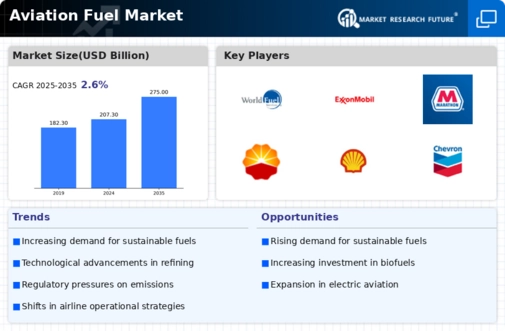
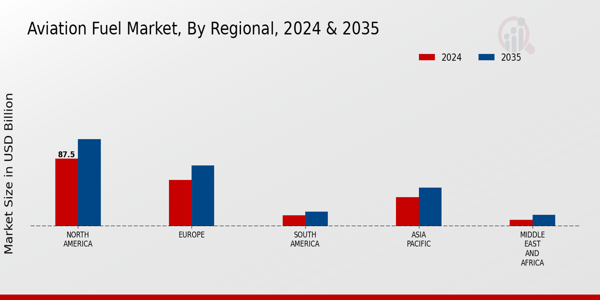

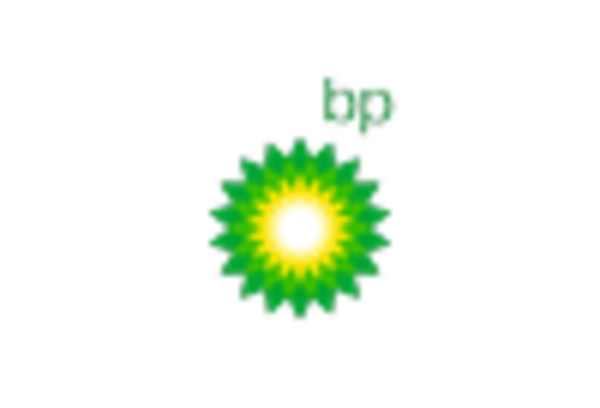
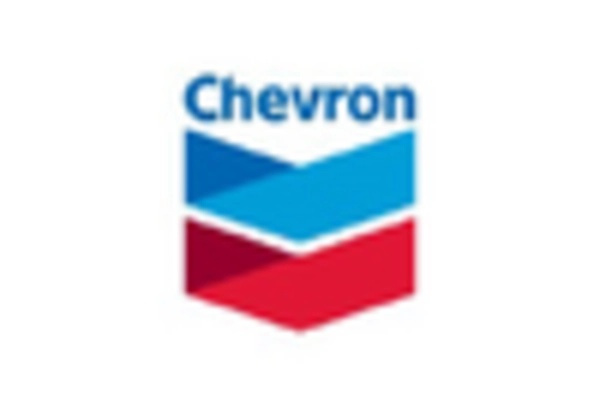

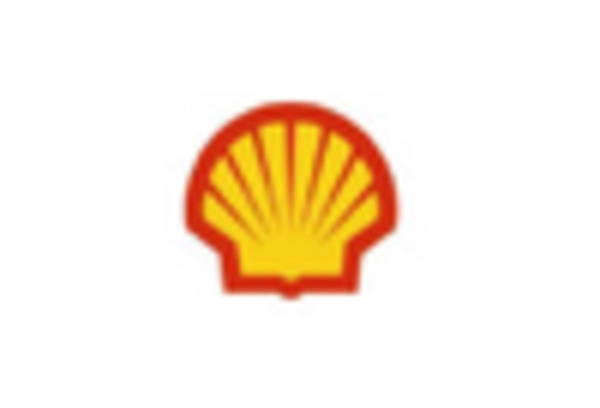


Leave a Comment